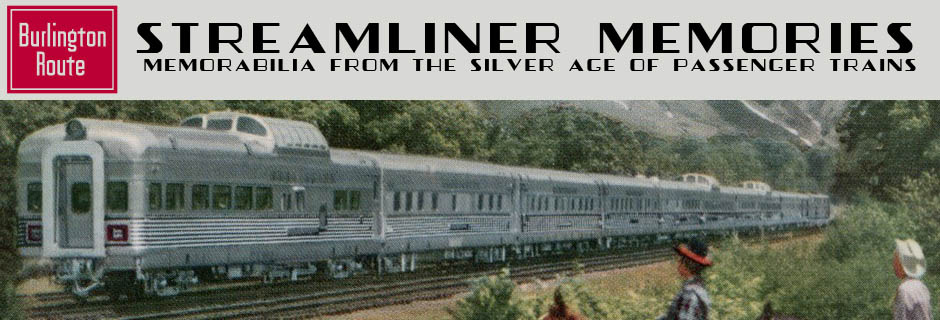As early as 1915, Missouri Pacific and National Railways of Mexico (NdeM) ran connecting trains, through cars, or through trains from St. Louis and/or San Antonio to Mexico City via Laredo and Nuevo Laredo. In 1948, in keeping with Missouri Pacific’s use of the word “eagle” in its streamliner names, the two railroads began running the Aztec Eagle, or in Spanish, Aguila Azteca, from San Antonio to Mexico City.
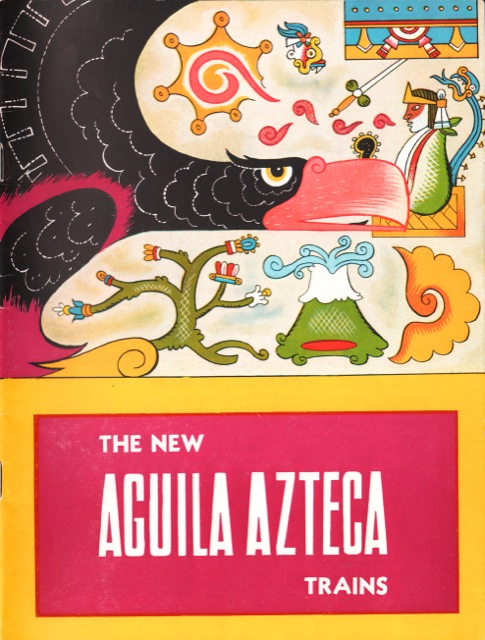
Click image to download a 12.5-MB PDF of this 32-page brochure.
Although there were through cars, the entire train did not go over the border. Moreover, Missouri Pacific was reluctant to send brand-new streamlined cars into Mexico, so despite the Eagle name the through cars were heavyweights.
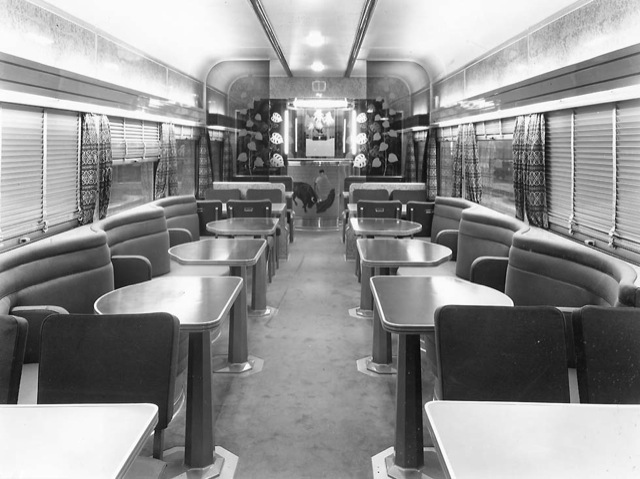
Interior of dining car built by Swiss railcar manufacturer Schindler for the Aguila Azteca. Click image for a larger view.
In 1952, NdeM went all the way to Switzerland to purchase new, streamlined trains for the Aguila Azteca from a company named Schindler. (Schindler today makes escalators and elevators, having sold its railcar division to Daimler-Benz in 1998, which in turn sold it to Stadler in 2001.) Each train consisted of a mail-baggage car; an 84-seat coach; two 56-seat coaches; a diner; two sleeping cars with eight sections and three three double-bedrooms; one sleeper with ten rooms, probably double-bedrooms; and an observation car. Since it took 26 hours to get from Nuevo Laredo to Mexico City, three sets of equipment were needed for the service. The above brochure describes these trains.
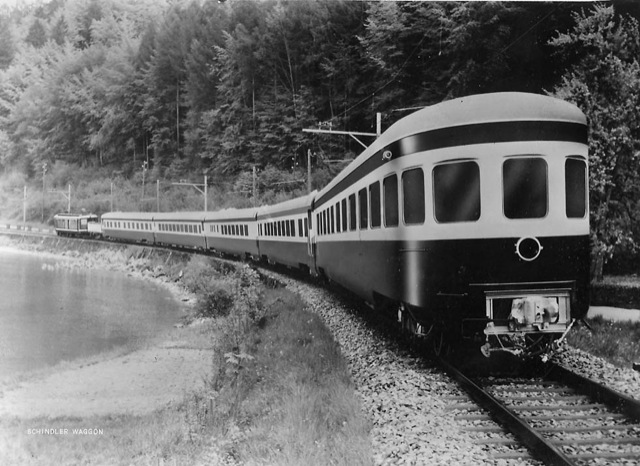
Cars on their way from the Schindler factory to a port. The observation car appears heavily retouched. Click image for a larger view.
The observation cars, which were named Olmeca, Mexica, and Maya, look distinctly Pullman, and NdeM even called them Pullman cars, suggesting Schindler may have paid some royalties to Pullman to use its designs. It’s hard to tell from black-and-white photos what colors they were painted, but by 1964 they had been repainted dark green with a thin orange-red stripe. NdeM later adopted a two-tone blue color scheme with a grey roof, which was faintly reminiscent of MoPac’s Eagle colors, and it is possible that the Swiss cars used an early version of this scheme.
None of the Schindler cars went north of Nuevo Laredo, with MP and NdeM continuing to send heavyweight equipment across the border in the early 1950s. Eventually, the through heavyweight cars were replaced by streamlined cars. Through sleepers from San Antonio to Mexico City continued to the end of 1968 while through coach service continued for a few weeks into 1969.
The Mexican trains ran at a leisurely average of 31 mph southbound and 34 mph northbound. Missouri Pacific’s segment from San Antonio to Laredo wasn’t much faster at 36 mph. Counting the time to get through customs, the total average speed from San Antonio to Mexico City was just 30 mph southbound and 33 mph northbound.
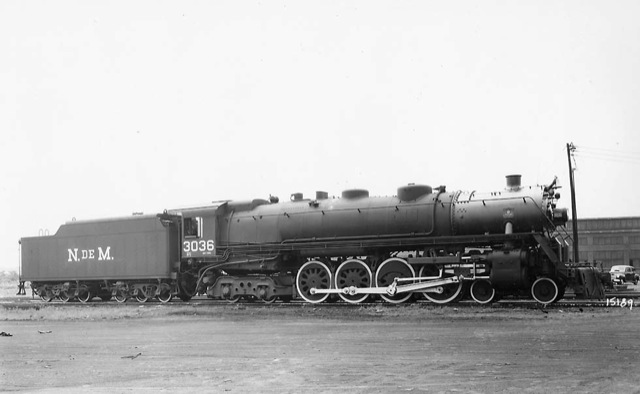
Though a small 4-8-4 by American standards, this is the largest passenger steam locomotive ever built for use outside the United States or Canada. Click image for a larger view.
When it began in 1948, NdeM powered the train with 4-8-4 locomotives built by Alco and Baldwin. Following New York Central tradition, the railroad called these “Niagaras” instead of Northerns. Compared with American Northerns, these were some of the smallest 4-8-4s ever built. Yet they were some of the largest locomotives ever built for use outside of the United States and Canada, weighing 50 tons more, for example, than the more-recent Chinese 2-10-2s.
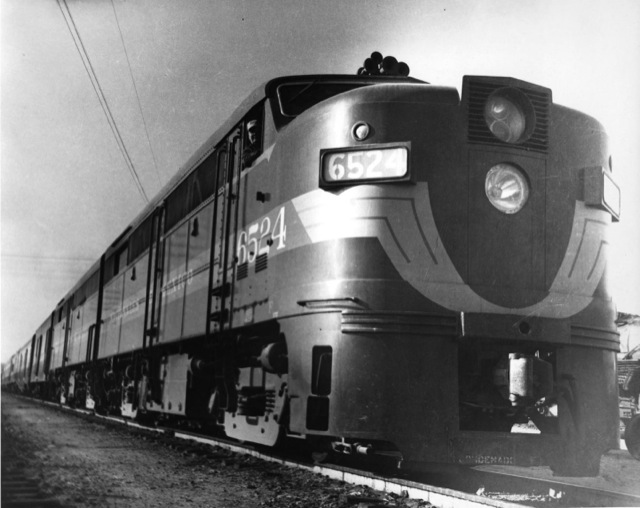
An Alco FPA in NdeM colors of Pullman green with a red stripe; however, the nose decorations are orange with red pinstripes. Click image for a larger view.
NdeM Dieselized the train about the time it received the Swiss streamlined cars. For Diesel power, NdeM initially used General Motors FP-7s. Later its purchased Alco FPAs, and also had some Baldwin Centipedes.
